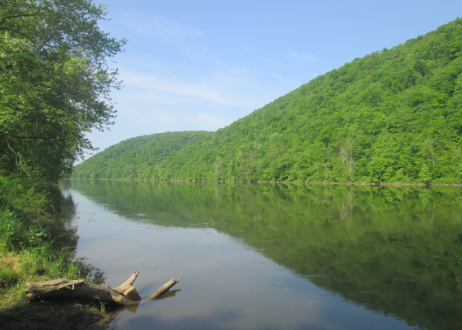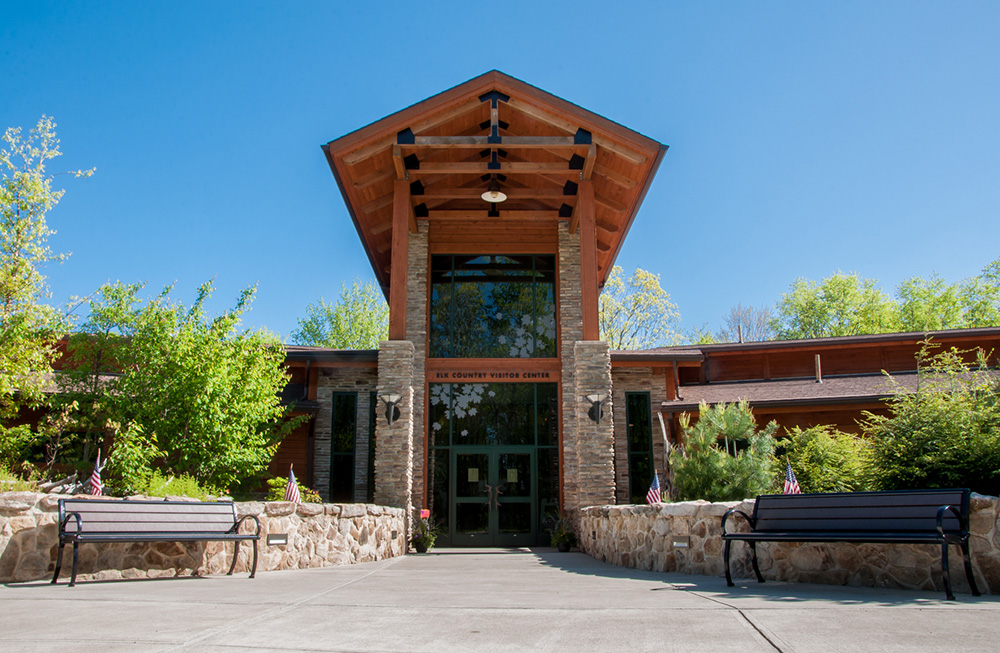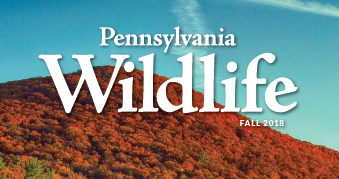Wildlife watching in the Pennsylvania Wilds
“Bear!” my communications director says from the back seat as we exit Interstate 80 near S.B. Elliott State Park and head into the Pennsylvania Wilds.
It is May and we are returning from a brainstorming session with partners in Harrisburg about how to inspire stewardship through pawilds.com and in advertising campaigns that promote visitation to this most rural part of the state.
The meeting went well, and now, like a good omen, this gift. I touch the breaks. My managing director watches from the front seat as the bear lumbers across the road and disappears into the woods.
“That was so cool,” she says.
This is not the first time this has happened to us. Our nonprofit, the PA Wilds Center, serves the 12 ½ counties of the Pennsylvania Wilds region, so we spend a lot of time on trails, waterways and country roads that snake through the region’s more than 2 million acres of public land. Two of us in the car today are fourth-generation locals, one of us a hunter, all of us enjoy the outdoors. But seeing wild things in the wild never gets old.
With the greatest concentration of public lands in the Commonwealth, most of it forested, and more than 16,000 miles of waterways, there are few places better than the Pennsylvania Wilds to spot deer, elk, turkey, eagles, fox, coyote and other animals in the wild. Ask us. We know. This is our office.
The Pennsylvania Wilds covers a quarter of the Commonwealth. A hardy four percent of the state’s population lives here. It takes four hours to drive from one side of our rugged region to the other. On one of my first road trips here, a decade ago, I came across half a dozen fawn playing near a swing set in a yard near Sinnemahoning State Park. The whimsical scene made me smile and laugh. We probably sat in our cars for five minutes watching the fawn chase each other around the swings, all spots and clumsy legs.
Ask my staff about memorable wildlife moments and they all have them. One of my favorites: last year, my two directors were packing up from the Buyer’s Market in Clarion County, an annual trade show we organize for members of the Wilds Cooperative of Pennsylvania, our regional value-chain of makers and manufacturers who supply locally-made products. As they started the drive north, an eagle decided to escort them, soaring in front of their car for several minutes.
“It was like it was leading the way for us,” says my managing director.
It is hard not to be inspired by these moments.
Whether you are coming specifically for the wildlife or just hope to spot some on your next business trip this way, here are a few places my staff and I would encourage you to explore. Enjoy!
The Nature Inn at Bald Eagle State Park – As part of the collective effort to grow nature and heritage tourism in the Pennsylvania Wilds, DCNR built several premier conservation visitor facilities in the region. The 16-room Nature Inn is one of them. Voted USA Today’s Best Eco-Friendly Lodge in the nation, it is a unique gem in the state park system. Meters installed in rooms help guests track energy use.

Bald Eagle State Park is a birder’s paradise. Its mountain ridges create flyways for migrating birds, and various species stop here to rest and feed. In Spring, warblers, flycatchers, swallows and other songbirds display courtship rituals while nesting. “Boaters and beachgoers often spot bald eagles, herons, gulls, geese and osprey around the lake,” the Inn’s website says. “In fall, you can find migrating mergansers, cormorants, and buffleheads on the lake. Year-round residents, including sparrows, finches and cardinals, are often seen during the winter in shrubby areas.” Learn more at: www.pawilds.com/landscape/i-80-frontier/.
Susquehannock Trail System (STS) – If you like to see wildlife while hiking, this 85-mile loop in the Wilds’ Dark Skies landscape is for you. The STS, which winds through forested valleys and over hills in Susquehannock State Forest, was developed by joining together a number of old and new foot trails, logging roads, and abandoned railroad grades. Susquehannock Trail Club volunteers maintain the trail system, selling trail maps and guides to support their work. Ed and Carol Szymanik are longtime volunteers. They own Susquehannock Lodge, which has an access trail to the STS and serves many hikers. The Szymaniks worked with the owners of nearby Pine Creek Outfitters to publish a guidebook about the trail system. “People have seen just about everything we have around here,” says Carol Szymanik. “Bear, deer, porcupines, raccoons, bobcats, ruffed grouse, turkeys, rattlesnakes down in the southern section around Cross Fork. Some people have seen elk tracks – they did release a few male elk in Potter County a few years ago. They did wander around, but went back down to Elk County where the females were.” Learn more at: www.pawilds.com/landscape/dark-skies/.
National Wild & Scenic Allegheny and Clarion Rivers – If paddling is more your style, find great wildlife watching along these two award-winning waterways. Named one of the nation’s “40 Great Fall Weekend Getaways” and Pennsylvania’s 2017 River of the Year, the Allegheny flows through PA’s only National Forest. On kayak trips to camp on its Wilderness Islands, I’ve seen deer, bear, eagle, blue heron and many other critters.

If you start at Kinzua Dam (most do), be sure to visit the Eagle Viewing Platform (check out this incredible video caught by Allegheny Outfitters, a local business that helps thousands of people plan river trips from Kinzua Dam each year). The owners of Country Squirrel Outfitters, on the Clarion River, have paddled and mountain-climbed all over the country, but say there’s still no place like home. “We see bald eagles and other birds on nearly every kayak trip,” says Miranda Putt, who owns CSO with her husband, Steve, who works in conservation. “We have also seen river otters, and have had customers that had bear and deer cross the river in front of them.” Learn more at: www.pawilds.com/journey/national-wild-scenic-rivers/.
Quehanna Wild Area – The last time I drove through this 50,000-acre protected wild area, I had to drive about 25 miles per hour because the wildlife was so abundant. I stopped counting after eight elk and two dozen deer. Home to a great trail system and off-the-beaten path waterfalls, the Quehanna Wild Area should be on the short list for any serious wildlife watcher. Learn more at: www.pawilds.com/asset/quehanna-wild-area/.
Benezette in Winter – Last year, 481,000 people flocked to the Elk Country Visitor Center to view our region’s wild elk herd — the largest in the northeastern United States. Many of them came during the fall rut season. I’ll be the first to say watching the male elk spar and hearing them bugle during the rut is spectacular, but my favorite time to visit Benezette is in winter, when the tourists are gone. I often catch elk in the parking lots of the Benezette Hotel, post office or other area businesses.

“Winter is a great time to view the elk as they are easy to see with the foliage being off the trees and the elk are saving their energy for the long winter months,” says my friend Doug Ruffo, who owns Benezette Wines. “The bulls carry their antlers until March and the lead bulls will hang with their harem of cows for much of the winter.” If you want to get a little holiday shopping done, try visiting December 1-2 for ‘Shop Benezette,’ which several local businesses participate in. Wapiti Woods Guest Cabins are a favorite lodging in the area. Learn more at: www.pawilds.com/landscape/elk-country/.
Elk Scenic Drive – This 127-mile loop through portions of five counties is a drive-to-believe-it kind of experience. The distinct Elk Scenic Drive road signs are your guide for this journey. Known for unparalleled wildlife and epic views, you can start from the west end (Rt. 144) or east end at Lock Haven (Rt. 120) via easy access points off I-80. Multiple drive stops not only include some of the best places to observe our region’s awe-inspiring wild elk herd, but also help travelers experience the diversity and abundance of the region’s wildlife and recreational assets that are hallmarks of this scenic and rugged landscape, including five state parks and two major visitor conservation facilities that are great for kids and adults — the Elk Country Visitor Center and Wildlife Center at Sinnemahoning State Park. Learn more at: pawilds.com/journey/elk-scenic-drive/.
A portion of this article was recently published in the Fall 2018 edition of “Pennsylvania Wildlife” by the Wildlife for Everyone Foundation, which aims to promote wildlife conservation and education in Pennsylvania.



